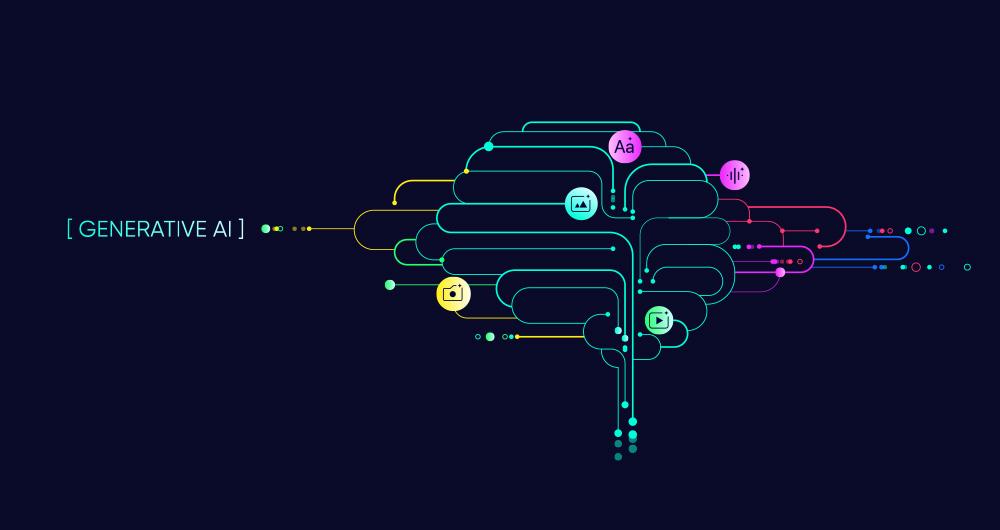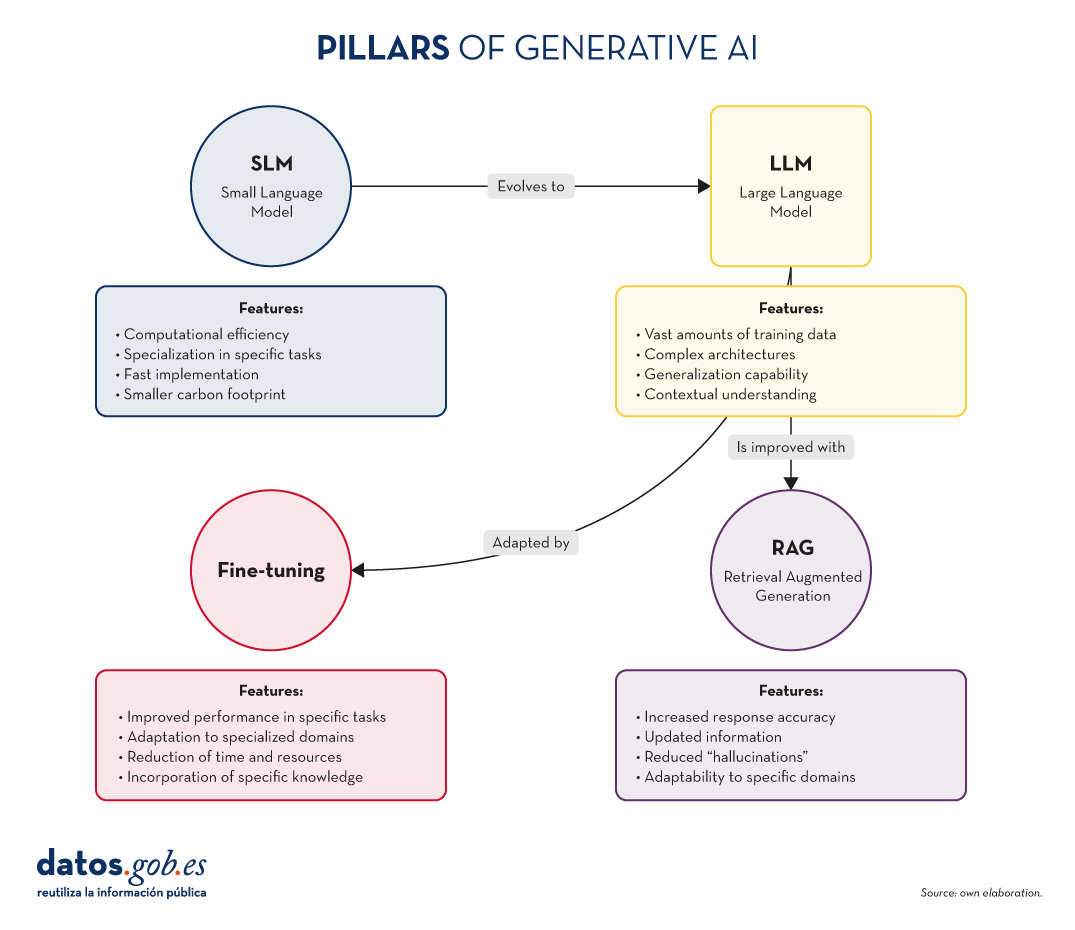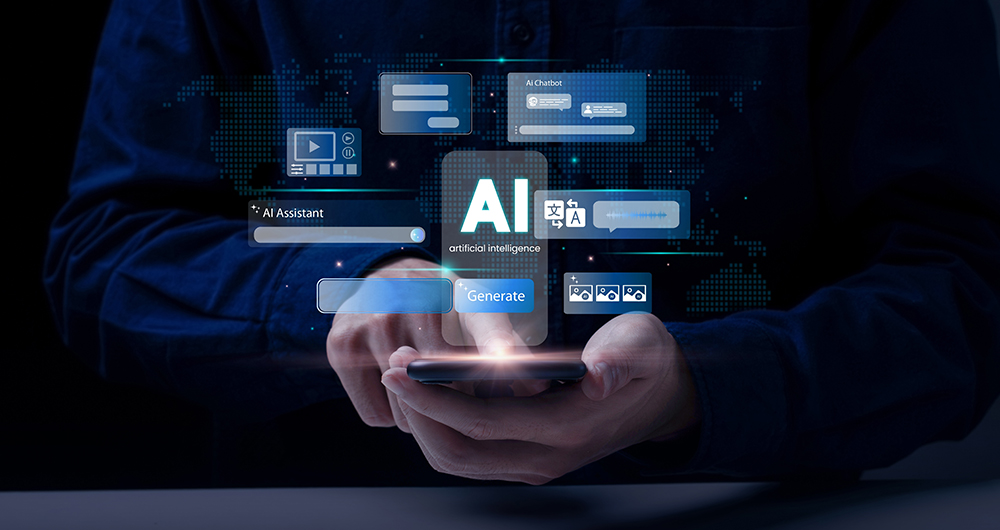
In the fast-paced world of Generative Artificial Intelligence (AI), there are several concepts that have become fundamental to understanding and harnessing the potential of this technology. Today we focus on four: Small Language Models(SLM), Large Language Models(LLM), Retrieval Augmented Generation(RAG) and Fine-tuning. In this article, we will explore each of these terms, their interrelationships and how they are shaping the future of generative AI.
Let us start at the beginning. Definitions
Before diving into the details, it is important to understand briefly what each of these terms stands for:
The first two concepts (SLM and LLM) that we address are what are known as language models. A language model is an artificial intelligence system that understands and generates text in human language, as do chatbots or virtual assistants. The following two concepts (Fine Tuning and RAG) could be defined as optimisation techniques for these previous language models. Ultimately, these techniques, with their respective approaches as discussed below, improve the answers and the content returned to the questioner. Let's go into the details:
- SLM (Small Language Models): More compact and specialised language models, designed for specific tasks or domains.
- LLM (Large Language Models): Large-scale language models, trained on vast amounts of data and capable of performing a wide range of linguistic tasks.
- RAG (Retrieval-Augmented Generation): A technique that combines the retrieval of relevant information with text generation to produce more accurate and contextualised responses.
- Fine-tuning: The process of tuning a pre-trained model for a specific task or domain, improving its performance in specific applications.
Now, let's dig deeper into each concept and explore how they interrelate in the Generative AI ecosystem.

Figure 1. Pillars of Generative AI. Own elaboration.
SLM: The power of specialisation
Increased efficiency for specific tasks
Small Language Models (SLMs) are AI models designed to be lighter and more efficient than their larger counterparts. Although they have fewer parameters, they are optimised for specific tasks or domains.
Key characteristics of SLMs:
- Computational efficiency: They require fewer resources for training and implementation.
- Specialisation: They focus on specific tasks or domains, achieving high performance in specific areas.
- Rapid implementation: Ideal for resource-constrained devices or applications requiring real-time responses.
- Lower carbon footprint: Being smaller, their training and use consumes less energy.
SLM applications:
- Virtual assistants for specific tasks (e.g. booking appointments).
- Personalised recommendation systems.
- Sentiment analysis in social networks.
- Machine translation for specific language pairs.
LLM: The power of generalisation
The revolution of Large Language Models
LLMs have transformed the Generative AI landscape, offering amazing capabilities in a wide range of language tasks.
Key characteristics of LLMs:
- Vast amounts of training data: They train with huge corpuses of text, covering a variety of subjects and styles.
- Complex architectures: They use advanced architectures, such as Transformers, with billions of parameters.
- Generalisability: They can tackle a wide variety of tasks without the need for task-specific training.
- Contextual understanding: They are able to understand and generate text considering complex contexts.
LLM applications:
- Generation of creative text (stories, poetry, scripts).
- Answers to complex questions and reasoning.
- Analysis and summary of long documents.
- Advanced multilingual translation.
RAG: Boosting accuracy and relevance
The synergy between recovery and generation
As we explored in our previous article, RAG combines the power of information retrieval models with the generative capacity of LLMs. Its key aspects are:
Key features of RAG:
- Increased accuracy of responses.
- Capacity to provide up-to-date information.
- Reduction of "hallucinations" or misinformation.
- Adaptability to specific domains without the need to completely retrain the model.
RAG applications:
- Advanced customer service systems.
- Academic research assistants.
- Fact-checking tools for journalism.
- AI-assisted medical diagnostic systems.
Fine-tuning: Adaptation and specialisation
Refining models for specific tasks
Fine-tuning is the process of adjusting a pre-trained model (usually an LLM) to improve its performance in a specific task or domain. Its main elements are as follows:
Key features of fine-tuning:
- Significant improvement in performance on specific tasks.
- Adaptation to specialised or niche domains.
- Reduced time and resources required compared to training from scratch.
- Possibility of incorporating specific knowledge of the organisation or industry.
Fine-tuning applications:
- Industry-specific language models (legal, medical, financial).
- Personalised virtual assistants for companies.
- Content generation systems tailored to particular styles or brands.
- Specialised data analysis tools.
Here are a few examples
Many of you familiar with the latest news in generative AI will be familiar with these examples below.
SLM: The power of specialisation
Ejemplo: BERT for sentiment analysis
BERT (Bidirectional Encoder Representations from Transformers) is an example of SLM when used for specific tasks. Although BERT itself is a large language model, smaller, specialised versions of BERT have been developed for sentiment analysis in social networks.
For example, DistilBERT, a scaled-down version of BERT, has been used to create sentiment analysis models on X (Twitter). These models can quickly classify tweets as positive, negative or neutral, being much more efficient in terms of computational resources than larger models.
LLM: The power of generalisation
Ejemplo: OpenAI GPT-3
GPT-3 (Generative Pre-trained Transformer 3) is one of the best known and most widely used LLMs. With 175 billion parameters, GPT-3 is capable of performing a wide variety of natural language processing tasks without the need for task-specific training.
A well-known practical application of GPT-3 is ChatGPT, OpenAI's conversational chatbot. ChatGPT can hold conversations on a wide variety of topics, answer questions, help with writing and programming tasks, and even generate creative content, all using the same basic model.
Already at the end of 2020 we introduced the first post on GPT-3 as a great language model. For the more nostalgic ones, you can check the original post here.
RAG: Boosting accuracy and relevance
Ejemplo: Anthropic's virtual assistant, Claude
Claude, the virtual assistant developed by Anthropic, is an example of an application using RAGtechniques. Although the exact details of its implementation are not public, Claude is known for his ability to provide accurate and up-to-date answers, even on recent events.
In fact, most generative AI-based conversational assistants incorporate RAG techniques to improve the accuracy and context of their responses. Thus, ChatGPT, the aforementioned Claude, MS Bing and the like use RAG.
Fine-tuning: Adaptation and specialisation
Ejemplo: GPT-3 fine-tuned for GitHub Copilot
GitHub Copilot, the GitHub and OpenAI programming assistant, is an excellent example of fine-tuning applied to an LLM. Copilot is based on a GPT model (possibly a variant of GPT-3) that has been specificallyfine-tunedfor scheduling tasks.
The base model was further trained with a large amount of source code from public GitHub repositories, allowing it to generate relevant and syntactically correct code suggestions in a variety of programming languages. This is a clear example of how fine-tuning can adapt a general purpose model to a highly specialised task.
Another example: in the datos.gob.es blog, we also wrote a post about applications that used GPT-3 as a base LLM to build specific customised products.
Interrelationships and synergies
These four concepts do not operate in isolation, but intertwine and complement each other in the Generative AI ecosystem:
- SLM vs LLM: While LLMs offer versatility and generalisability, SLMs provide efficiency and specialisation. The choice between one or the other will depend on the specific needs of the project and the resources available.
- RAG and LLM: RAG empowers LLMs by providing them with access to up-to-date and relevant information. This improves the accuracy and usefulness of the answers generated.
- Fine-tuning and LLM: Fine-tuning allows generic LLMs to be adapted to specific tasks or domains, combining the power of large models with the specialisation needed for certain applications.
- RAG and Fine-tuning: These techniques can be combined to create highly specialised and accurate systems. For example, a LLM with fine-tuning for a specific domain can be used as a generative component in a RAGsystem.
- SLM and Fine-tuning: Fine-tuning can also be applied to SLM to further improve its performance on specific tasks, creating highly efficient and specialised models.
Conclusions and the future of AI
The combination of these four pillars is opening up new possibilities in the field of Generative AI:
- Hybrid systems: Combination of SLM and LLM for different aspects of the same application, optimising performance and efficiency.
- AdvancedRAG : Implementation of more sophisticated RAG systems using multiple information sources and more advanced retrieval techniques.
- Continuousfine-tuning : Development of techniques for the continuous adjustment of models in real time, adapting to new data and needs.
- Personalisation to scale: Creation of highly customised models for individuals or small groups, combining fine-tuning and RAG.
- Ethical and responsible Generative AI: Implementation of these techniques with a focus on transparency, verifiability and reduction of bias.
SLM, LLM, RAG and Fine-tuning represent the fundamental pillars on which the future of Generative AI is being built. Each of these concepts brings unique strengths:
- SLMs offer efficiency and specialisation.
- LLMs provide versatility and generalisability.
- RAG improves the accuracy and relevance of responses.
- Fine-tuning allows the adaptation and customisation of models.
The real magic happens when these elements combine in innovative ways, creating Generative AI systems that are more powerful, accurate and adaptive than ever before. As these technologies continue to evolve, we can expect to see increasingly sophisticated and useful applications in a wide range of fields, from healthcare to creative content creation.
The challenge for developers and researchers will be to find the optimal balance between these elements, considering factors such as computational efficiency, accuracy, adaptability and ethics. The future of Generative AI promises to be fascinating, and these four concepts will undoubtedly be at the heart of its development and application in the years to come.
Content prepared by Alejandro Alija, expert in Digital Transformation and Innovation. The contents and points of view reflected in this publication are the sole responsibility of its author.


